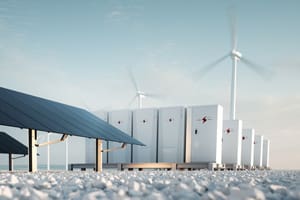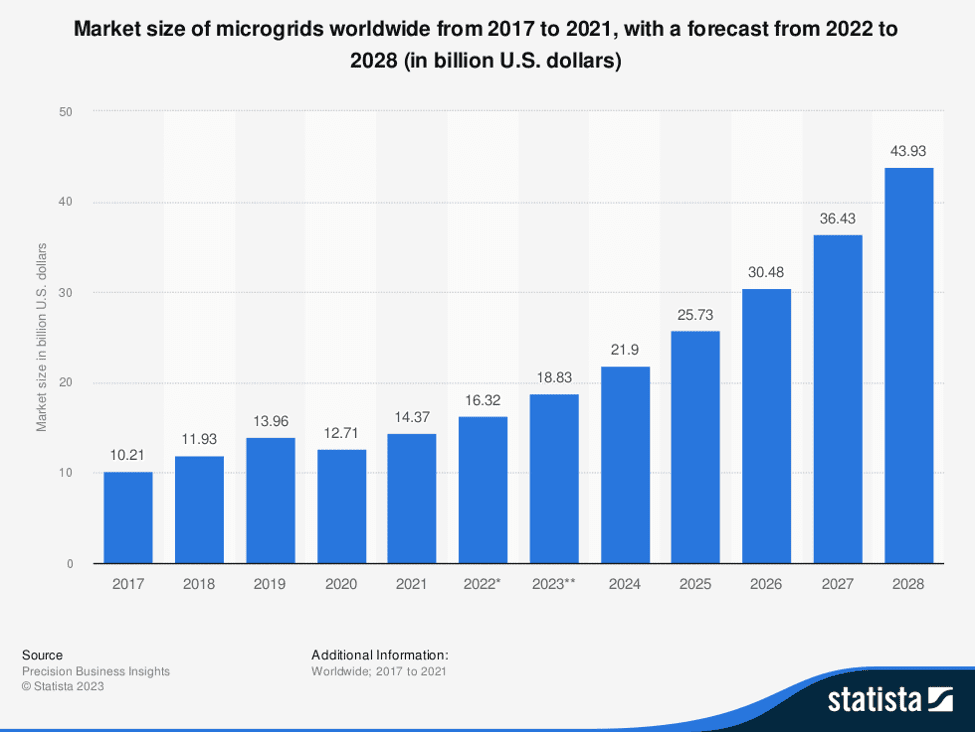Small-scale power generators critical for a resilient energy grid
The use of distributed energy resources (DERs) and microgrids is integral to provide a flexible and resilient energy system that can help meet the growing demand for clean energy.
Note: The views expressed here are solely those of the author and/or interview subject and do not represent positions of IEEE.

As the world becomes more focused on sustainable energy sources and reducing carbon emissions, the use of distributed energy resources (DERs) and microgrids has become increasingly widespread. DERs refer to small-scale power-generation units that can be installed in homes, buildings, and communities, while microgrids are local power grids that can operate independently of the main grid. Together, they offer a flexible and resilient energy system that can meet the growing demand for clean energy.
One of the main benefits of DERs is their ability to generate power locally, and ultimately realizing a reduced need for long-distance transmission of electricity. This helps to ensure a more reliable and stable supply of electricity. DERs can be connected to the main grid or operate independently, depending on the needs of the community. Examples of DERs include solar panels, wind turbines, fuel cells, and energy storage systems.
Microgrids, on the other hand, are local power grids that can operate independently of the main grid. They consist of one or more DERs, energy-storage systems, and control systems that allow them to manage the flow of electricity within the microgrid. They can be used to power small communities, commercial buildings, or critical infrastructure such as hospitals and data centers.
Microgrids are also becoming popular in the industry, particularly in remote areas where the main grid is unreliable or nonexistent, or in urban areas as power backup during blackouts or to offset peak demand periods. They provide a reliable source of power and can help to reduce the use of diesel generators.
Another benefit of DERs and microgrids is their ability to reduce carbon emissions. Dr. Jianhui Wang1, professor of electrical and computer engineering at Southern Methodist University, Dallas, TX, USA, specializes in smart grids. Among his many IEEE roles, Dr. Wang is chair of the power system operation, planning, and economics committee of the IEEE Power Energy Society that is looking to understand how to integrate the DER and microgrid technologies into operations and planning to advance decarbonization of the energy systems.
Dr. Wang says, “By generating power locally, DERs reduce the need for long-distance transmission of electricity, which results in lower transmission losses and a more efficient use of energy. DERs can also generate clean energy, which helps to reduce the carbon footprint of the community.”
DERs and microgrids offer a more resilient energy system that is less vulnerable to power outages and natural disasters. They can operate independently of the main grid, which means that they can continue to supply power even if the main grid goes down. This is particularly important in areas that are prone to natural disasters such as hurricanes, wildfires, and earthquakes.
Dr. Wang points out that the resiliency of the energy grid enables the public to benefit during large weather events when the power is reduced or cut. Even an electric vehicle can behave as a DER to power a home or business for a short period of time. To enhance grid resilience against high-impact, low-frequency events, two questions should be answered: how to quantify the resilience of a given grid and how to incorporate the quantification into power-system planning, operation, and restoration.
A recent paper in the IEEE Transactions on Sustainable Energy discusses a new set of quantitative metrics with clear physical interpretation to comprehensively evaluate power-system resilience.
To achieve a 95% decarbonization of the electric grid as part of reaching the UN Paris Agreement climate goals, the electric grid will need to undergo a massive transition, including the new technologies brought on by DERs and microgrids. Technical standards are essential to enable safe interconnections between the various technologies, including interoperability with hardware and software.
IEEE Standards Association (IEEE SA) provides foundational standards and a collection of resources on DER. In addition, IEEE SA provides an education and credentialing program around the IEEE 1547™ standards suite.
Mark Siira, chair of the IEEE Standards Coordinating Committee 21, oversees the development of standards concerning fuel cells, photovoltaics, dispersed generation, and energy storage, including the IEEE 15472 and IEEE 20303 series. The recently revised IEEE 1547™-2018 defines requirements of these DER interconnections that will take the current electrical system into the future. Siira notes, “There are several projects to develop new standards related to the evolving requirements of the industry. We invite interested engineers to join the standards process.”
[1] www.smu.edu. (n.d.). Jianhui Wang. Available at: https://www.smu.edu/Lyle/Academics/Departments/ECE/People/Faculty-and-Staff/WangJianhui
[2] ieeexplore.ieee.org. (n.d.). IEEE Xplore® Search Results. Available at: https://ieeexplore.ieee.org/search/searchresult.jsp?newsearch=true&queryText=1547
[3] ieeexplore.ieee.org. (n.d.). IEEE Xplore Search Results. Available at: https://ieeexplore.ieee.org/search/searchresult.jsp?newsearch=true&queryText=2030



